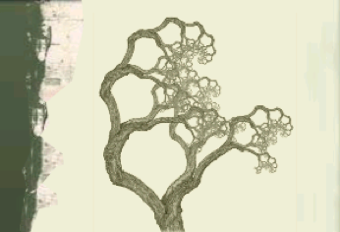When a quantity grows (gets bigger), then we can compute its PERCENT INCREASE. When it grows from an original amount to a bigger new amount, then: [beautiful math coming... please be patient] $$\text{PERCENT INCREASE} = \frac{\displaystyle{(\text{new amount} - \text{original amount})}} {\displaystyle\text{original amount}} $$
#1 Click here toCHECK YOUR UNDERSTANDING Close the exercise
|
|
|
Some people write this formula with $\,100\%\,$ at the end, to emphasize that since it is percent increase, it should be reported as a percent. Recall that $\,100\% = 100\cdot\frac{1}{100} = 1\,$. So, $\,100\%\,$ is just the number $\,1\,$, and multiplying by $\,1\,$ doesn't change anything except the name of the number! So, here's an alternate way to give the formula: $$\text{PERCENT INCREASE} = \frac{\displaystyle{(\text{new amount} - \text{original amount})}} {\displaystyle\text{original amount}}\cdot 100\% $$
#2 Click here toCHECK YOUR UNDERSTANDING Close the exercise
|
|
|
When a quantity shrinks (gets smaller), then we can compute its PERCENT DECREASE. When it shrinks from an original amount to a smaller new amount, then: [beautiful math coming... please be patient] $$\text{PERCENT DECREASE} = \frac{\displaystyle{(\text{original amount} - \text{new amount})}} {\displaystyle\text{original amount}} $$ OR $$\text{PERCENT DECREASE} = \frac{\displaystyle{(\text{original amount} - \text{new amount})}} {\displaystyle\text{original amount}}\cdot 100\% $$
#3 Click here toCHECK YOUR UNDERSTANDING Close the exercise
|
|
|
Both formulas have the following pattern: [beautiful math coming... please be patient] $$\text{PERCENT INCREASE/DECREASE} = \frac{\displaystyle{\text{change in amount}}} {\displaystyle\text{original amount}} $$ OR $$\text{PERCENT INCREASE/DECREASE} = \frac{\displaystyle{\text{change in amount}}} {\displaystyle\text{original amount}}\cdot 100\% $$
you always compare how much a quantity has changed
to the original amount.
(or zero, if the quantity doesn't change at all).
Which is the original price? Answer: $\,\$5$
This will be the denominator.
be sure to give your answer as a PERCENT.
Which is the original quantity? Answer: $90$
This will be the denominator.
then it is rounded to two decimal places.
Which is the original price? Answer: $\,\$16$
This will be the denominator.
It's not always the first number to appear—be careful!
|
|
|
